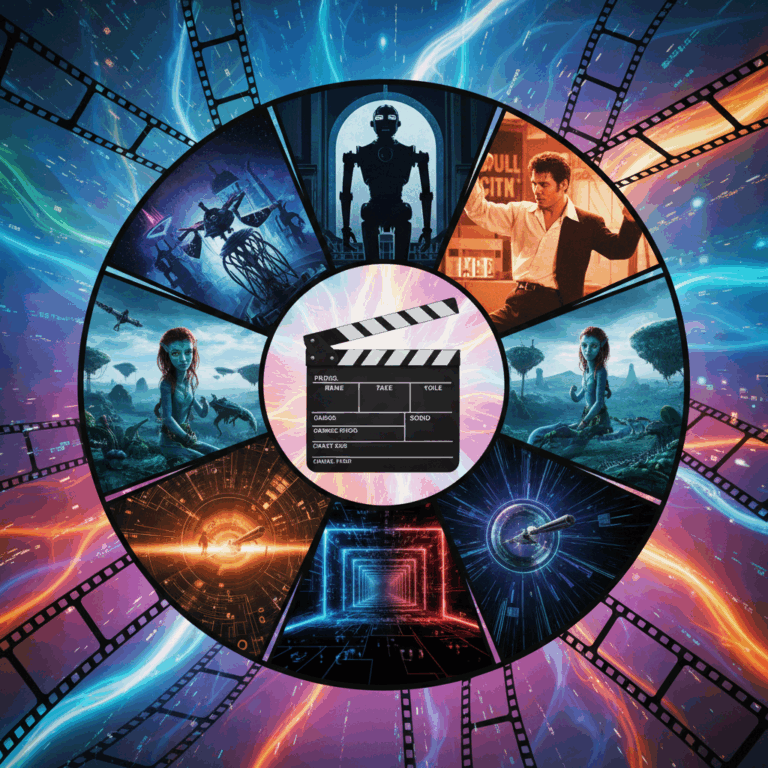Innovations in screenwriting and narrative
Cinema has evolved thanks to innovations in screenwriting and narrative, which break with traditional styles and bring new ways of telling stories.
These innovations allow for greater complexity and depth in the audiovisual experience, influencing generations of filmmakers.
Next, we explore how The birth of a nation and Citizen Kane These fundamental changes marked the beginning of the pandemic.
Modern cinematic language in The Birth of a Nation
The birth of a nation (1915), directed by DW Griffith, established key foundations of modern cinema with revolutionary visual narrative resources.
He introduced parallel editing, alternating shots and camera movements that enrich the fluidity and understanding of the story.
These techniques transformed the way stories were told, profoundly influencing the evolution of global cinematic language.
Non-linear structure and subjectivity in Citizen Kane
Citizen Kane (1941), by Orson Welles, broke the mold with a non-linear narrative structure, exploring the subjectivity of its characters.
His innovative use of depth of field and unusual angles allowed for a more complex and psychological narrative, similar to literature.
The film redefined screenwriting and directing, setting a new standard for narrative and visual cinema.
Revolutions in editing techniques and visual effects
Cinema revolutionized its language with bold editing techniques and groundbreaking visual effects, transforming the way stories are told and experienced.
Movies like The Battleship Potemkin, The Matrix and Toy Story They marked milestones that impacted both technique and visual perception.
These innovations opened doors to new artistic and technological forms, redefining the power of cinema as an expressive and technological medium.
Expressive montage in Battleship Potemkin
The Battleship Potemkin (1925) revolutionized montage using cuts that not only narrated but also expressed emotions and political tensions.
The Odessa Steps sequence is an iconic example where editing creates rhythm and symbolism, amplifying the dramatic impact.
This technique profoundly influenced Soviet and global cinema, demonstrating montage as a tool to provoke emotional reaction and social awareness.
Special effects and bullet time in The Matrix
The Matrix (1999) innovated with bullet time, a technique that slows down time and allows the action to be shown from multiple angles at the same time.
This visual effect redefined action scenes, giving a new stylistic and technical dimension, and was also imitated by numerous subsequent productions.
The film demonstrated how technological advances can create immersive visual experiences that deeply impact the viewer.
Computer animation with Toy Story
Toy Story (1995) was the first film created entirely with computer animation, marking a revolution in the animated film industry.
This achievement not only changed the technique, but also opened up a new visual language, allowing for greater creativity and dynamism in animated storytelling.
Furthermore, it laid the foundations for the development of digital animation, influencing dozens of subsequent films and multimedia formats.
Leadership and style strategies
Directing and stylistic strategies in film allow for the creation of unique atmospheres and the transmission of emotions with great visual and narrative impact.
Innovative directors like Alfred Hitchcock and Christopher Nolan have transformed cinema with techniques that increase tension and realism.
These films highlight how directing can redefine genres and solidify the artistic power of cinema.
Tension and suspense in Alfred Hitchcock's Psycho
Psychosis (1960) redefined suspense with editing decisions that generate constant and unexpected tension in the audience.
The iconic shower scene is a cut-and-sound study that deepens the horror without explicitly showing the violence.
Hitchcock breaks the mold by eliminating the protagonist halfway through the film, defying traditional narrative expectations.
Scientific realism in Interstellar
Interstellar (2014) brought scientific realism to cinema, thanks to the collaboration with physicist Kip Thorne to recreate space effects.
His accurate model of the black hole not only provides visual but also scientific authenticity, influencing academic publications.
This alliance between science and art demonstrates how direction can elevate cinema to a unique educational and aesthetic experience.
Commercial impact and film distribution
Modern cinema stands out not only for its art, but also for its commercial and distribution model that has evolved to maximize global reach.
Iconic films have changed the way films are launched and promoted, generating cultural phenomena and transforming the industry in economic terms.
We will analyze how Shark He defined the blockbuster and the importance of advertising campaigns in mass distribution.
The blockbuster phenomenon with Jaws
Shark Steven Spielberg's (1975) created a before and after in the industry with its simultaneous release in multiple theaters, revolutionizing distribution.
This massive model succeeded in attracting large audiences, turning the blockbuster into a global cultural event and changing the way premieres were conceived.
The film also demonstrated the importance of generating hype, making marketing a key part of a film's commercial success.
Advertising campaigns and mass distribution
Modern advertising campaigns play a fundamental role in promotion, using trailers, merchandising, and social media to capture attention and generate anticipation.
Mass distribution allows a premiere to reach multiple markets simultaneously, optimizing revenue and positioning films in global trends.
This comprehensive approach has become a necessary strategy to maximize commercial impact, ensuring large audiences from day one.






